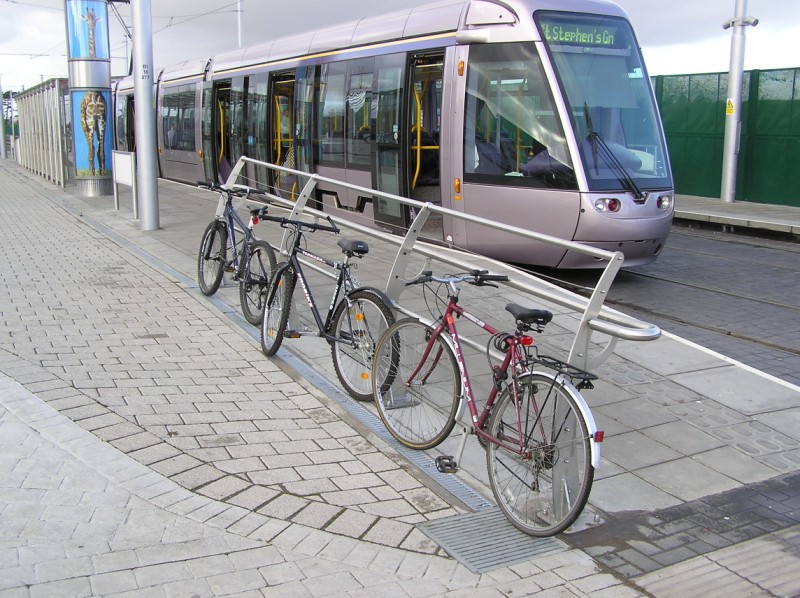 Figures released under Ireland’s Freedom of Information laws have revealed that Dublin’s proposed new underground metro line will cost more than €5bn ($US 6.86bn). If given the go-ahead, the metro north route will link the north Co Dublin satellite town of Swords to the city centre (St Stephen’s Green) via the airport.
Figures released under Ireland’s Freedom of Information laws have revealed that Dublin’s proposed new underground metro line will cost more than €5bn ($US 6.86bn). If given the go-ahead, the metro north route will link the north Co Dublin satellite town of Swords to the city centre (St Stephen’s Green) via the airport.The link will be the first of two metro routes with a second westbound line also planned to link the growing outlying towns of Tallaght, Clondalkin, Blanchardstown and Porterstown with the north metro line at the airport. The two new lines will link up with existing infrastructure including the two Luas (light rail) lines, the DART (Dublin Area Rapid Transit) and Dublin suburban rail network. The new public transport systems are badly needed to service the Irish capital’s incredible growth and deal with its attendant traffic chaos.
Despite a slight slowdown since the double digit growth of the Celtic Tiger, Ireland with its comparative youthful population is expected to have economic growth of 6 per cent annually for the next 15 years. A report by NCB stockbrokers also predicts 70,000 immigrants arriving annually meaning that by 2020 a fifth of Ireland’s population will be immigrants. Dublin will have to deal with a large percentage of this growth.
The Greater Dublin Area (GDA) dominates the Irish economic landscape. The GDA, incorporating Dublin and surrounding counties of Kildare, Meath and Wicklow contains 1.53 million inhabitants, representing almost 40 per cent of national population. Approximately 47.5 per cent of all immigrants into Ireland come to the GDA and 49 per cent of all employment growth in Ireland is located there. This growing dominance places huge pressures on urban land markets and has resulted in constraints including problems of accessibility and congestion, infrastructure constraints and affordable housing difficulties.
There have been a number of new transport initiatives in the last few years including the M50 ring road motorway and the two Luas lines. The Luas has proved successful with the system making a profit of €5.6 m in 2006 ($US 7.68 m) with more than 26 million passenger trips according to the annual report of the Railway Procurement Agency (RPA). The profits will be invested in developments on the Luas lines, including increased frequency of service and the RPA is working on the extension of the two lines. The Luas is hampered however by the inability to link the two existing lines. The metro north route will address this deficiency.
 According to a speech last year by the then Transport Minister Martin Cullen, the plan is to complete the railway construction for the 15 stop 17km metro north route by 2012. The journey to Swords from the city centre will be cut to 26 minutes. Cullen claimed that over 100 million passengers would take the Luas and Metro when the project is delivered in full. He also targeted 375 million passenger journeys by all public transport in 2015 as against approximately 200 million in 2006.
According to a speech last year by the then Transport Minister Martin Cullen, the plan is to complete the railway construction for the 15 stop 17km metro north route by 2012. The journey to Swords from the city centre will be cut to 26 minutes. Cullen claimed that over 100 million passengers would take the Luas and Metro when the project is delivered in full. He also targeted 375 million passenger journeys by all public transport in 2015 as against approximately 200 million in 2006. But the main transport issue facing Dublin is to change the culture of car dependency. In his book “Gridlock: Dublin’s transport crisis and the future of the city” James Wickham argues Dublin's rising car usage is not an inevitable consequence of rising affluence but is the result of social and political choices. The book states that in the second half of the 20th century, Dublin's public transport system was destroyed. Even before the 1990s boom, the city was becoming more suburbanised in a way that exacerbated its inhabitants' dependency on the motor vehicle. By 1990 nearly 60 per cent of all journeys to work in Dublin were by private car. The arrival of the two metro routes will be a significant help but Dublin needs much more of the same to achieve what Cullen calls “ a 21st century infrastructure for a 21st century economy”.
No comments:
Post a Comment